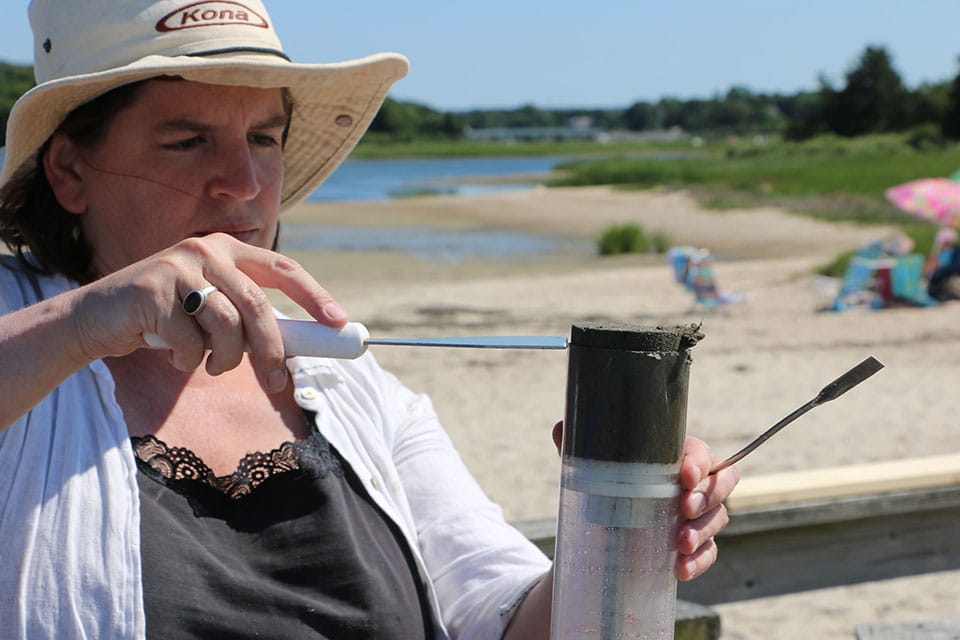This diagram illustrates the mechanisms by which carbon moves into and out of coastal wetlands: (1) Carbon dioxide in the atmosphere is taken in by trees and plants during the process of photosynthesis. This is called sequestration. (2) Dead leaves, branches, and roots containing carbon are buried in the soil, which is frequently, if not always, covered with tidal waters. This oxygen-poor environment causes very slow breakdown of the plant materials, resulting in significant carbon storage. (3) A small amount of carbon is lost back to the atmosphere through respiration, while the rest is stored in the leaves, branches, and roots of the plants. This diagram is adapted from a figure in Sutton-Grier et al. 2014 Marine Policy
Coastal wetland ecosystems (salt marshes, mangroves, and seagrass beds) can store large quantities carbon for two main reasons:
- Their plants usually grow a lot each year, and in the process, capture (or sequester) large amounts of carbon dioxide (CO2).
- Their soils are largely anaerobic (without oxygen) so carbon that gets incorporated into the soils decomposes very slowly and can persist for hundreds or even thousands of years (carbon storage).
Carbon Pathways
Coastal wetlands tend to be very productive ecosystems—meaning that the plants grow a lot each year. As part of the growth process, plants capture carbon dioxide from the air and convert it to plant parts such as leaves, stems, or roots. This process is called “fixation” or “uptake” of carbon dioxide.
Carbon is also lost back to the atmosphere when plants respire (exhale) carbon dioxide, the same way people exhale carbon dioxide. This carbon dioxide is the byproduct of the plants breaking down sugars (i.e. food) and converting it to energy.
Some of the carbon that plants capture gets added to soils either via internal transport in the plant or when plant parts, such as leaves and roots, die and become incorporated into the soil.
Once carbon is in the soil some of it is respired by microbes and returns to the atmosphere as carbon dioxide. However, some of the carbon stays stored in the soils, often for hundreds or even thousands of years, buried deep underground.
The Importance of Anaerobic Soils
One reason coastal wetlands are particularly good at storing carbon is because the soils are largely anaerobic, which means they lack oxygen.
In most coastal wetlands there is usually a thin layer of soil that is oxygenated and above water, but the remainder of the soil is submerged in water. Oxygen diffuses very slowly through water, so saturated (wet) soils in these wetland habitats tend to have little to no oxygen present.
Decomposition of organic plant material is much slower when there is no oxygen present, so the carbon present in this plant material remains intact, rather than being broken down by microbes and respired back to the atmosphere. As a result, wetlands are very good carbon sinks (meaning they store a lot of carbon).
In summary, coastal wetlands are particularly good at storing carbon because the plants annually sequester (capture) a lot of carbon and then these ecosystems store carbon for long periods of time in their soils.
 An official website of the United States government.
An official website of the United States government.




Social